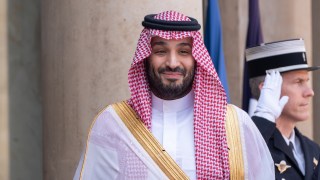Upping the ante on Western weapons could end the stalemate in Ukraine
After nearly two years of intense combat, the Russo-Ukrainian war might be at a strategic tipping point. For now, the ground fight in Ukraine’s east is stalemated, but Russian sea and air power in Crimea is diminished. The future flow of Western aid may be less certain.
To address these challenges, the West might escalate support for Ukraine’s military and signal firmness to Moscow.
Two years into the war, Ukraine has put to good use a steadily increasing flow of modern Western arms. Medium-range missiles — the French SCALP and British Storm Shadow — are sinking Russian warships. They and U.S. ATACMS ground-launched ballistic missiles are destroying parked aircraft and logistics and command nodes.
U.S.-made Patriot ground-based interceptors are downing Kinzhal hypersonic missiles, which Putin bragged were invincible. In mid-January, Patriots may have downed a valuable A-50 airborne early warning aircraft and damaged an Il-22 airborne command post. Russia was flying them behind the forward edge of the battlefield, but not far enough back. Ukrainian forces might have taken advantage of complacency.
Some claim the war is stalemated, but the reality is more complex.
Soldiers on both sides may be exhausted but Russian morale appears to be low. Some Russian soldiers fear they are no more than cannon fodder. Under the murderous strategy of Chief of the General Staff Valery Gerasimov, Russian ground forces have consumed much modern equipment and wasted several hundred thousand troops. Russia is resorting to upgraded but six-decade-old T-62 tanks and low-quality North Korean artillery shells, while Ukraine is receiving modern German Leopard tanks and U.S. Bradley fighting vehicles.
Ukraine is using its Neptune anti-ship missiles and naval drones to gain control of the western Black Sea. Ukraine has resumed much of its grain exports despite Russian mines. NATO allies Bulgaria, Romania and Turkey have joined forces to clear them.
In December, a Ukrainian air strike in Crimea blew up a large Russian tank landing ship. Other Russian ships have fled Crimea and sought refuge eastward. Ukrainian forces have destroyed numerous targets in Crimea, including launch facilities for the S-400, Russia’s best anti-aircraft system.
Ukraine’s fortunes may further improve. It will soon operate F-16 fighter bombers, which could down cruise missiles and destroy Russian air defenses. Also In the pipeline is a U.S. short-range ground-launched glide bomb. It could be used along with the ATACMS submunition variant to gain superiority in tactical fires.
Still, in important ways, Ukraine remains a punching bag. It lacks sufficient weapons of its own to attack facilities in Russia from which strikes on Ukraine are launched. And the U.S. does not allow its weapons to be used against Russian territory. Yet, the history of warfare shows that when one side has a nearby sanctuary, the other can be disadvantaged.
With Russian aggression continuing unabated, Ukraine and the West might bolster deterrence and defense by raising the stakes. NATO airborne warning and control system aircraft, flying at a safe distance, could help protect and guide Ukraine’s F-16s. Longer-range U.S. weapons and greater targeting flexibility could help Ukraine hold at risk important military targets in Russia.
Longer-range ATACMS with unitary warheads might spur Russian forces to move logistics and command hubs farther back, diminishing their ability to support frontline operations. F-16s may expand Ukraine’s capacity to launch longer-range cruise missiles, such as the low-observable, U.S. Joint Air-to-Surface Standoff Missile, called JASSM.
Despite irresponsible nuclear bluster from former Russian President Dmitry Medvedev, repeated Ukrainian shocks — such as blunting the initial assault to seize Kyiv, sinking the Black Sea flagship the Moskva, damaging the Kerch bridge and routing Russian forces in the Kharkiv region — have not led to fearsome responses.
With Moscow continuing its brutal winter bombardment, Ukraine and the West should not be lured by the siren song of negotiations or a ceasefire. Putin has made clear by words and actions that he holds to the conquest of all of Ukraine. Russia’s military campaign likewise reveals no hint of restraint.
Now is the time to up-arm Ukraine with longer-range weapons and unleash the nation to make the best use of them.
William Courtney is an adjunct senior fellow at the nonprofit, nonpartisan RAND Corporation and was U.S. ambassador to Kazakhstan, Georgia, and the U.S.-USSR commission to implement the Threshold Test Ban Treaty. Peter A. Wilson is an adjunct senior international and defense researcher at RAND and teaches a course on the history of military technological innovation at the Osher Lifelong Learning Institute.
Copyright 2024 Nexstar Media Inc. All rights reserved. This material may not be published, broadcast, rewritten, or redistributed.







